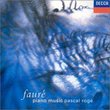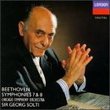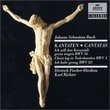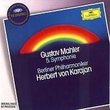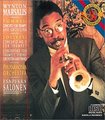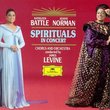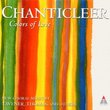| All Artists: Scriabin, Ashkenazy Title: Piano Sonatas 1-10 Members Wishing: 0 Total Copies: 1 Label: Polygram Records Release Date: 9/26/1989 Genre: Classical Styles: Forms & Genres, Sonatas, Historical Periods, Modern, 20th, & 21st Century Number of Discs: 2 SwapaCD Credits: 2 UPC: 028942557925 |
Search - Scriabin, Ashkenazy :: Piano Sonatas 1-10
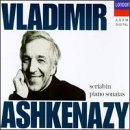 | Scriabin, Ashkenazy Piano Sonatas 1-10 Genre: Classical
![header=[] body=[This CD is available to be requested as disc only.]](/images/attributes/disc.png?v=15401716) ![header=[] body=[This CD is available to be requested with the disc and back insert.]](/images/attributes/disc_back.png?v=15401716) ![header=[] body=[This CD is available to be requested with the disc and front insert.]](/images/attributes/disc_front.png?v=15401716) ![header=[] body=[This CD is available to be requested with the disc, front and back inserts.]](/images/attributes/disc_front_back.png?v=15401716) |
Larger Image |
CD DetailsSimilar CDs
Similarly Requested CDs |
CD ReviewsAshkenazy Captures the Feverish and Mystic Heart of Scriabin Michael A Pahre | Cambridge, MA | 05/20/2000 (5 out of 5 stars) "Alexander Scriabin was a pivotal composer between 19th century late romanticism and 20th century modernism and experimentation. During his short life he composed mostly for the piano, producing many etudes and a series of 10 piano sonatas. The compositions range from dramatic (and melodramatic) to lyrical to mystic, but often descend into feverish dark yearnings. How strange his first piano sonata must have sounded to western Europeans steeped on Brahms, Schumann, and Tchaikovsky--Scriabin must have resembled Liszt or Paganini, only more violent and slightly mad. As his compositions progressed, he turned more and more to a mystical style and less virtuosity in his piano technique. His last compositions (in the 1910s) show little connection to the other modernists of the time--Berg (Op. 1), Schoenberg (Op. 19, 23), Debussy (Etudes), etc.--but are just as progressive as any of these other works.Put in the first CD of this 2-CD set, and you'll immediately hear the beginning of Scriabin's first piano sonata: big thundering chords and passages running across the keyboard. This is complicated, fiery, symphonic, but also lyrical music--which plays right into the strengths of pianist Vladimir Ashkenazy. His technique is so accomplished it is hard to imagine that there is any music he would find it difficult to tackle. (Possibly this is why he has turned to conducting lately: he has recorded most of the piano literature and may be bored with it!) There is little not to like in Ashkenazy's playing of this eccentric and lesser known composer, and I find there are many new things I hear each time I listen to this disk. I have always found Ashkenazy to be a very good pianist in the standard piano literature (Beethoven, Chopin, Liszt) but only excelling in Rachmaninoff. These recordings of Scriabin are as good as any of his Rachmaninoff recordings. They were recorded between 1972 and 1984, with some analog and others digital, but all have been done beautifully with careful microphone placement and piano presence. It is all the better as a fully packed, 2-CD complete recording at the mid-price range." The very Scriabin Viđar Pálsson | Reykjavík, Iceland | 01/21/2000 (5 out of 5 stars) "Ashkenazy's Scriabin is internationaly acknowledged as warm and lyrical. The bass tone in this recording suits the work fine (like in the 'black mass') and the overall sound is very good. There are other sets and what I have heard from Hamelin is also very good. So if you find this recording not at all pleasant than that must be your musical taste and your view of Scriabin's music. Absolutely nothing in the performance of Ashkenasy is idiosincratic. I recommend this unit as a first choice." 1st and 8th sonata performances are outstanding SRS | Ohio | 04/08/2006 (4 out of 5 stars) "Here's a breakdown for my suggested recordings of the sonatas, based on those I've heard:
G#m posthumous: Hamelin. Ebm posthumous: Glemser. No. 1: Kocyan, then Ashkenazy, then Taub. Kocyan tells a story. Ashkenazy is passionate. Taub is darker. No. 2: Kocyan, then Glemser or Sofronitsky, then Ashkenazy. Kocyan's fluidity takes it, but Sofronitsky is artistic. Glemser's first movement is beautiful. No. 3: Laredo or Horowitz. Then Glemser or Taub. Then Ashkenazy or Sofronitsky. No. 4: Taub or Sofronitsky. The latter has more artistry, the former a more coherent and appropriate tone. No. 5: Horowitz or Taub. The former has electric genius, the latter has wonderful refinement. Hamelin's is excellent (definitely his best Scriabin performance). I've heard that Richter's is great, but I don't have it. No. 6: Richter (genius but bad sound quality), then Taub. Hamelin's is athletic and precise, but there is little mystery. No. 7: Glemser, then Laredo. The former brings out all the complexity with precision, the latter is sharp and clear. I have not heard Richter's. No. 8: Ashkenazy. Then Szidon or Laredo. I've read that Sofronitsky's is good, but I don't have it. No. 9: Sofronitsky, then Horowitz (all versions), then Glemser, then Szidon and Taub. No. 10: Horowitz or Taub. Same contrast of styles between the pianists as the fifth sonata. Like the fifth, this is Taub's other brilliant performance. Other pieces: Fantasy in B minor: Glemser Vers la flamme: Sofronitsky or Horowitz, then Laredo. Piano concerto: Ugorski/Boulez, then Ashkenazy/Maazel. Both are excellent, but I give the edge to Ugorski. Poem of Ecstasy: Maazel Prometheus: Ashkenazy/Maazel This set is quite uneven, as most "complete Scriabin sonatas" sets are. Scriabin's music is so demanding that no pianist that I've heard has managed to record all of the sonatas at a high level. Every set has flawed performances. Ashkenazy's flawed performances are the 7th and 10th particularly. The 5th is also quite choppy. However, Scriabin lovers should get this set as well because of the superb rendering of the 8th sonata, a piece that no one else (other than perhaps Sofronitsky, whose recording I don't have) plays well. His 1st is also full of passion, top-notch." |

 Track Listings (13) - Disc #1
Track Listings (13) - Disc #1